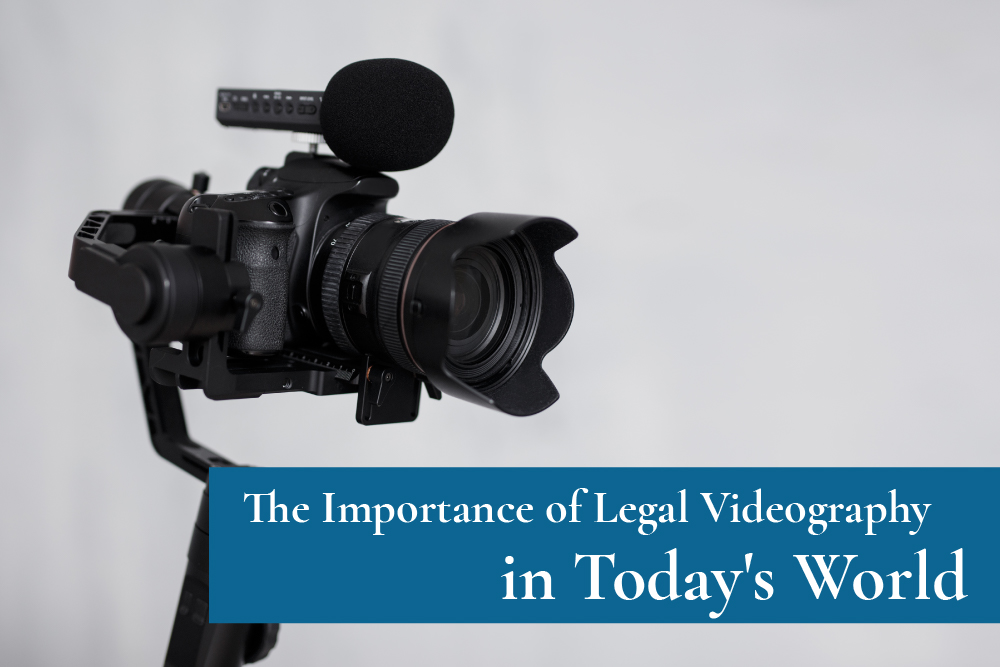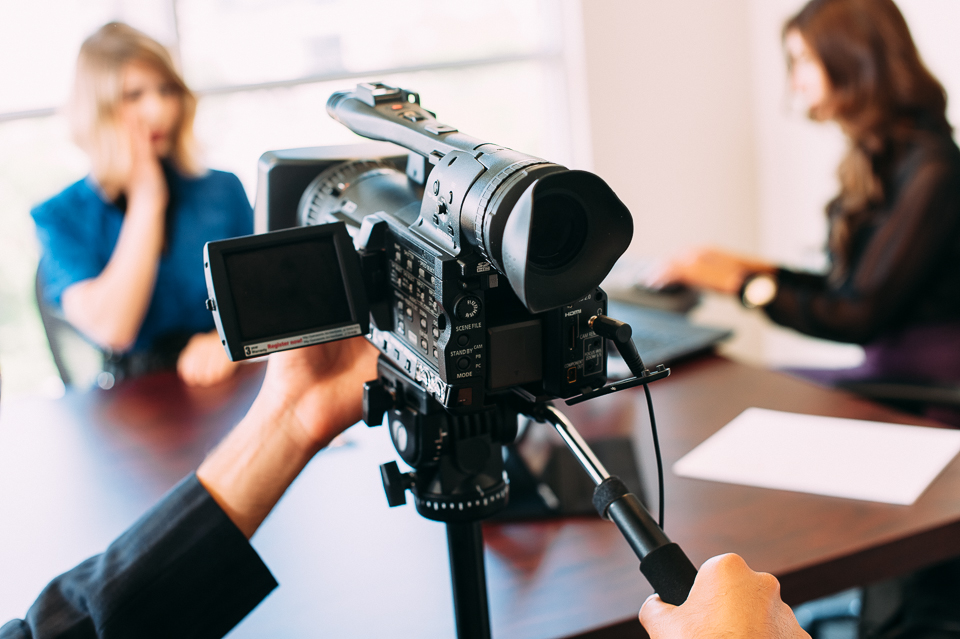Why Legal Videography Is Necessary for Modern Litigation Processes
Understanding the Significance of Videography in Legal Process
The combination of videography into legal proceedings has actually become a substantial consider the discussion and analysis of evidence. By recording visual components such as body language and facial expressions, videography improves the narrative surrounding witness testimonies and can exceptionally influence jury perceptions. As the legal landscape develops, recognizing its ramifications on reliability and clarity comes to be essential for attorneys. What ideal practices should be taken on to maximize its efficiency, and exactly how might future improvements improve this essential element of the judicial procedure?
Duty of Videography in Evidence
Videography plays an increasingly vital duty in legal procedures, working as an effective tool for providing evidence. The integration of video recordings into the lawful framework enables for a more vibrant representation of facts, enabling jurors and courts to picture occasions as they took place. This aesthetic documentation can include a series of products, including monitoring video, videotaped witness testaments, and professional presentations, all of which can considerably enhance the evidentiary landscape.
Among the primary benefits of videography is its capability to catch subtleties that might be shed in written accounts. Facial expressions, body language, and situational context can give essential understandings, aiding to communicate feelings and intents that text alone can not. The usage of video clip proof promotes a more interesting court room experience, possibly assisting jurors in comprehending intricate cases.
As technology advancements, the quality and availability of videographic evidence have actually enhanced, making it an essential component of modern lawful methods. Courts increasingly recognize the value of video as a trusted source of information, prompting attorneys to adjust their methods for proof presentation. Eventually, videography offers not only to highlight truths yet additionally to improve the overall stability of the judicial process.

Enhancing Reputation and Clarity
A substantial benefit of integrating videography in legal proceedings is its ability to improve both trustworthiness and clearness of proof provided in court. Videographic evidence can capture subtleties that written documents might neglect, such as tone, body movement, and context. This aesthetic depiction enables judges and courts to better understand the conditions bordering the instance, consequently promoting a much more exact understanding of the occasions in concern.

Additionally, the clarity paid for by videography reduces the possibility of misinterpretation that can occur from textual summaries. This precision is specifically essential in intricate instances, where details can be quickly misinterpreted. Inevitably, by providing evidence in a visually easily accessible layout, videography not just strengthens the integrity of the judicial procedure however also supports educated decision-making by those involved in lawful process.
Influence on Court Assumption
The addition of videographic proof dramatically influences court assumption, typically bring about click here for more info much more involved and educated deliberations. Jurors are commonly much more receptive to aesthetic details, which can improve their understanding of intricate instances. Videography offers truths in a way that is both available and engaging, allowing jurors to connect with the proof on a more personal level.
In addition, the ability to witness events as they happened can stimulate emotional actions that composed transcripts or verbal testaments may fail to generate. This emotional involvement can lead jurors to form more powerful viewpoints pertaining to the credibility of witnesses and the general story of the situation. The aesthetic depiction of proof additionally helps in clearing up ambiguities, making it simpler for jurors to comprehend the context and value of the details provided.
Moreover, videography can serve as more information an effective tool for narration, making it possible for lawyers to build a persuasive story that reverberates with the jury. When jurors can envision situations and witness key moments, their ability to calculated thoughtfully and get to a well-informed verdict is considerably boosted, ultimately impacting the outcome of legal proceedings.
Finest Practices for Legal Videography
Executing best methods in legal videography is important for making certain that aesthetic proof is both reliable and reliable in the courtroom. Initially, choose professional specialists who focus on lawful videography to ensure the technical top quality of the recordings. This includes using high-resolution video cameras and specialist audio tools to catch clear visuals and sound.
Second, maintain appropriate paperwork throughout the recording process. This entails developing an in-depth log that consists of timestamps, summaries of the material, and the identifications of all people present. Such documentation can reinforce the credibility of the video.

Additionally, think about using ideal editing strategies. While it is vital to preserve the original content, minor changes for quality-- such as boosting audio degrees-- can boost the general discussion without changing the substance.
Future Trends in Legal Videography
As lawful videography proceeds to progress, emerging innovations and methods are forming the future landscape of aesthetic proof in the court room (Legal Videography). One considerable trend is the combination of high-def and 4K video clip high quality, enhancing the quality and information of recorded testaments and proof. This improved resolution help jurors in adequately evaluating the reputation of witnesses and the nuances of the presented materials
In addition, the usage of man-made knowledge (AI) in video evaluation is getting grip. AI devices can assist in recognizing vital moments in video, generating transcripts, and also assessing non-verbal communication, which supplies much deeper understandings right into witness reliability. In addition, virtual reality (VIRTUAL REALITY) and augmented reality (AR) are positioned to revolutionize just how evidence is provided, permitting jurors to submerse themselves in criminal offense scenes or scenarios, thus cultivating an extra profound understanding of the context.
Conclusion
In recap, videography offers as an indispensable tool in lawful process, enhancing the presentation of proof and enriching the overall understanding of cases. By capturing non-verbal cues and boosting the trustworthiness of witness accounts, videography substantially affects jury perception and decision-making procedures - Legal Videography. Sticking to ideal practices guarantees the efficiency of lawful videography, while emerging fads promise to more boost its duty in the judicial system, eventually cultivating a much more informed and engaged legal environment
Videography plays a progressively essential function in legal process, offering as an effective tool for providing evidence.A considerable benefit of incorporating videography in lawful process is its ability to enhance both trustworthiness and clearness of evidence presented in court. Eventually, by offering evidence in an aesthetically available layout, videography not only enhances the integrity of the judicial procedure but additionally supports informed decision-making by those involved in legal procedures.
In summary, videography serves as an essential device in legal procedures, enhancing the discussion of proof and enriching the general understanding of cases. Legal Videography. Sticking to ideal techniques makes sure the effectiveness of lawful videography, while arising patterns assure to further increase its function in the judicial system, eventually promoting a much more enlightened and involved legal atmosphere